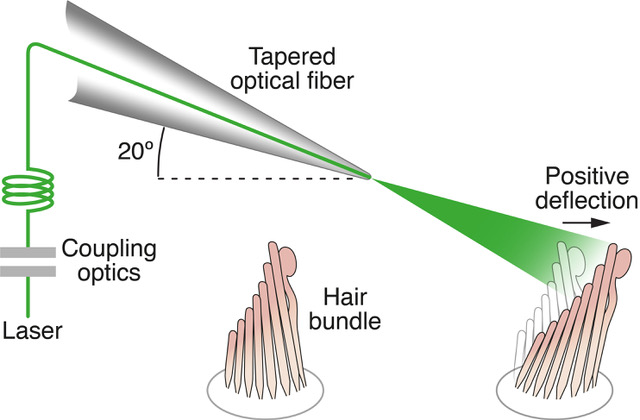Rapid mechanical stimulation of hair cells by photonic pressure
Hair cells, the receptors of the inner ear, detect sounds by transducing mechanical vibrations into electrical signals. From the top surface of each hair cell protrudes a mechanical antenna, the hair bundle, which detects and amplifies auditory stimuli, thus sharpening frequency selectivity and providing a broad dynamic range. Current methods for mechanically stimulating hair bundles are too slow to encompass the upper frequency range of mammalian hearing, which extends to 20 kHz in humans, and are plagued by inconsistencies. To overcome these challenges, we developed a method to move individual hair bundles with photonic force. This technique uses an optical fiber whose tip is tapered to a diameter of a few micrometers and fused into a ball lens in order to minimize divergence of the light beam. Delivery of laser light through this optical system applies photonic force that rapidly displaces vestibular and cochlear hair bundles.

